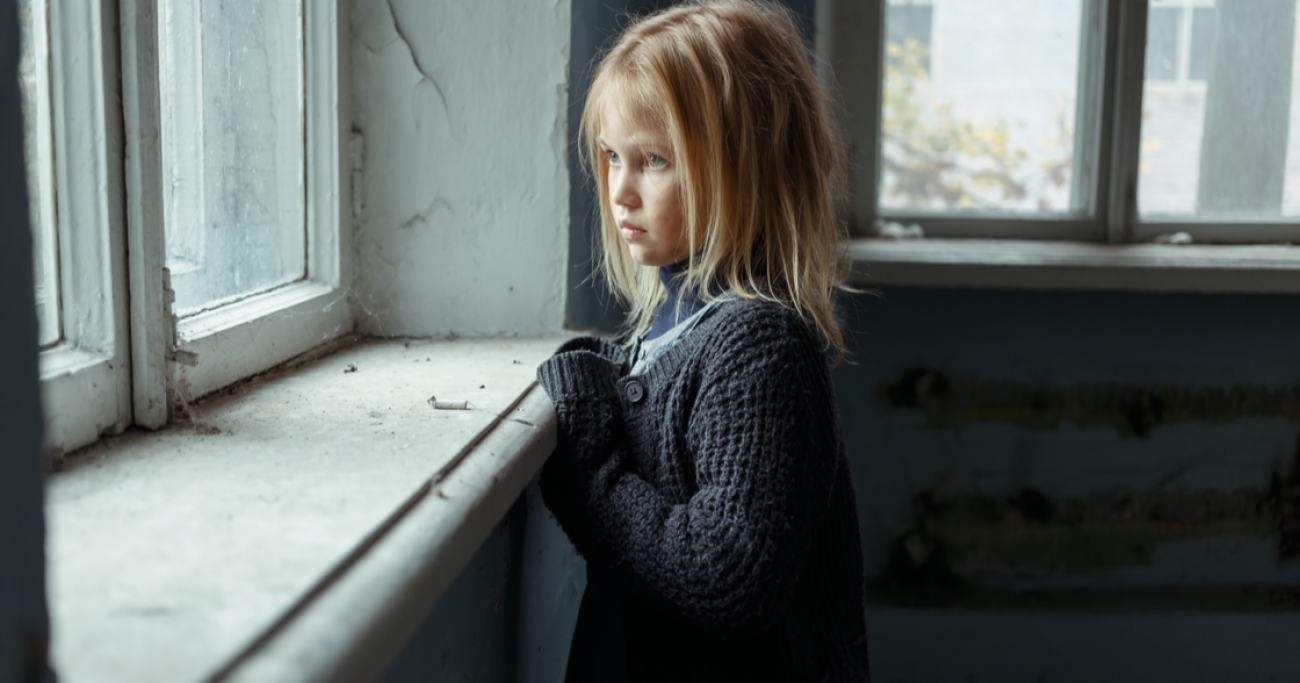Rural children more than twice as likely to be homeless in Michigan

There could be more than 15,000 homeless children ages 4 or younger in Michigan, with more than one in 10 in several rural counties lacking stable housing.
That’s the conclusion of a sobering new report that tries to quantify the number of homeless children in the state, and describes the long-term impact on their ability to learn, particularly if they do not receive early support.
The report, released by the Michigan League for Public Policy in collaboration with Poverty Solutions at the University of Michigan, estimates the number of homeless children age 4 or younger in Michigan to be 15,565. Of them, 75 percent live in urban counties.
But it’s Michigan’s rural counties that have the highest rates of homelessness ‒ 5.7 percent of children age 0-4 compared to 2.4 percent in urban counties.
The three counties with the highest percentages of homeless children are Arenac County, with 13.3 percent; Lake County, with 12 percent; and Alger County, with 11.1 percent. All are rural areas with populations under 15,000, but are scattered across northern regions of the state: Lake in the northwest, Arenac in the northeast, and Alger in the Upper Peninsula.
“This is not a rural issue, this is not an urban issue, but this is a statewide issue,” said Jennifer Erb-Downward, a senior research associate for U-M’s Poverty Solutions and a collaborator on the report. “It’s impacting different areas of the state in different ways, but it’s an issue that the entire state is struggling with.”
Study authors admit their count is an estimate. Measuring early childhood homelessness is tricky, because there is no centralized, unified state tracking system for homeless children before they enter the K-12 education system.
Some early childhood education programs, which work on improving literacy skills and cognitive and emotional development, record homelessness rates young children, but only for families that choose to self-disclose.
Before kindergarten, most young children don’t come into contact with these programs, and their data are not recorded. Moreover, homeless families are significantly less likely to utilize these programs – four out of five homeless children do not participate in an early education program.
“Parents of young children, especially, get concerned about disclosing their status, because of fear of getting involved with the child welfare system or around being identified as homeless,” said Sarah Ostyn, an analyst and author on the report with MLPP. “We have segmented data that is real data, but it doesn’t give us an overall population view.”
The report is based on K-12 education data, using percentages of first-graders who identify as homeless, and assuming the same percentages for younger children in the state ages 0 to 4.
Research shows children younger than 4 are at a significantly higher risk of experiencing homelessness than older children, because of the additional strain infants place on families; so the report’s estimate of 15,565 homeless young children could well be conservative.
“Having an infant or having a baby can be an incredibly destabilizing situation for families,” Erb-Downward said. “Suddenly your income might not be sufficient to support your family and you have additional expenses with diapers, food, and childcare … All those factors play into a child being at a greater risk for experiencing homelessness at a young age.”
Rural communities often lack resources to deal with homelessness; some don’t even have homeless shelters.
“Our rural communities don’t have as robust early childhood systems as our urban neighborhoods, which provides limitations on serving children in those areas especially,” Osytn said. “The biggest issue with rural homelessness is the lack of understanding of what that looks like, and because we don’t see those communities as facing the issue the way we do with urban communities, and because it’s not reported as frequently, leads us to not providing services to those rural communities.”
The metrics for homelessness are hard to pinpoint, due to stigma, lack of reporting, and varying definitions. “It’s not just if they’re living in a shelter or on the street,” Erb-Downward said. “If they’re moving from one house to the next house, couch-surfing continuously, this has an educational impact.”
The impacts of childhood homelessness can last into adulthood. Emotional, social, and cognitive development can be stunted by trauma associated with childhood homelessness, forging an achievement gap that can be observed in a child as young as 9 months. Children from families without a stable home are more likely to miss school, and the trauma of being homeless can alter brain development.
“Things like classroom participation and engagement, which obviously impact outcomes in math and reading, can be traced back to the development of logic and reasoning in the brain during [ages] 0 to 4,” Ostyn said.
“That’s where we can see all the emotional dysregulation, and we can say ‘Oh, this makes sense,’ because this child has been experiencing an unstable home life...there’s a direct correlation.”
In Michigan preschools, 54 percent of students who are homeless experience “major developmental delays,” compared to 16 percent of students with stable homes. By the end of high school, half of the students who were formerly homeless are reported to have repeated at least one grade.
The report points to expanding early childhood education programs and utilizing a “two-generational approach” to help mitigate the challenges that come with housing insecurity.
“Focusing on parents and what they need impacts children,” Ostyn said. “In the meantime, we know there are children experiencing homelessness, so support at both the preventative and responsive sides are both essential when addressing this issue.”
Michigan has greatly expanded preschool opportunities for low- and moderate-income families in recent years through the Great Start Readiness Program. State funding for preschool for 4-year-olds has more than doubled since 2012. A family of four can earn up to $64,000 a year and qualify for free of subsidized full-day pre-kindergarten.
See what new members are saying about why they donated to Bridge Michigan:
- “In order for this information to be accurate and unbiased it must be underwritten by its readers, not by special interests.” - Larry S.
- “Not many other media sources report on the topics Bridge does.” - Susan B.
- “Your journalism is outstanding and rare these days.” - Mark S.
If you want to ensure the future of nonpartisan, nonprofit Michigan journalism, please become a member today. You, too, will be asked why you donated and maybe we'll feature your quote next time!




